How to build a campus all-optical network?
2021/3/5 14:54:33
All-optical network has been the focus of attention in the weak power industry, and many weak power integrators/engineers have come into contact with related projects, so what is all-optical network? How to build all-optical network projects? In this issue, let's take a detailed look at this aspect of the content.
First, what is all-optical network?
The so-called all-optical network refers to the network transmission and exchange process all through the fiber optic realization, the signal is only in and out of the network when the electro-optical and photoelectric conversion, and in the network transmission and exchange process signal is always in the form of light, so it can greatly improve the network speed.
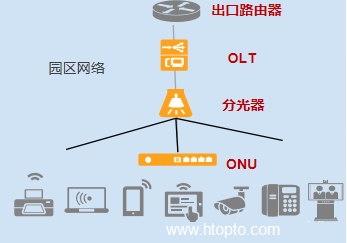
Speaking of this, we have to talk about the POL all-optical network.
POL (Passive Optical LAN), Passive Optical LAN, a new LAN networking method based on PON technology, optimizes the basic wiring and network structure of LAN, with a flatter and more concise network structure. It inherits the advantages of PON network such as large bandwidth, high reliability, flatness, easy deployment and easy management.
The POL network unifies broadband, voice, video, WiFi, CATV, office and other services.
POL solutions are widely used in hotels, campuses, enterprise parks, corporate office buildings, electric power, transportation and other scenarios.
In the face of a large number of business communications, the traditional cable transmission is bound to be limited, the need for higher bandwidth, POL PON network-based all-optical LAN can solve.
Longer coverage distance.
More types of services.
Higher user bandwidth.
A more streamlined network structure.
To put it directly, the network in the transmission and switching process signal is always in the form of optical fiber, the network speed is greatly increased, thus simplifying the network structure, a variety of services a network bearer, the network for a large "thin".
Second, how to build all-optical network campus ��?
So how to build all-optical network? Here we take the all-optical network solution in the park as an example.

Unified network: Each business mode can realize network convergence, each service can support access, and can support interactive intelligent services.
Unified network management: PON, switch and other management operation and maintenance, WLAN, video equipment management, fiber link detection, fault location.
Adjustable bandwidth, smooth upgrade: instant speed up, regular speed up, flexible mode, customer bandwidth from 0 ~ 1G+ arbitrary upgrade, bandwidth 1G ~ 10G does not affect the ODN network.
A. Wired + WiFi + weak power, a network bearing
For the campus all-optical network how to achieve it? Let's look at the overall topology diagram.
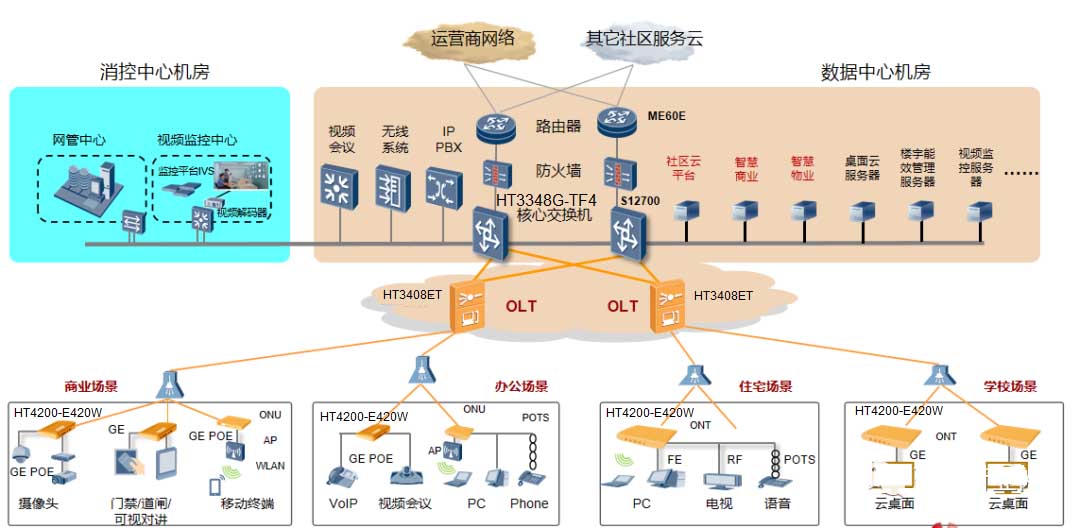
Each part is transmitted through optical fiber.
B, the basis of all-optical network construction: ODN network introduction
ODN: Optical Distribution Network, an optical cable network based on PON equipment, provides optical transmission channels between OLT and ONU, then how to transmit it?

All-optical network infrastructure transmission process is divided into four parts, the campus server room, feeder section, wiring section, home section, let's look at those connections respectively.
Campus server room: mainly ODF, patch cords, splitters.
Feeder section: cable splice box, cable transfer box, splitter, feeder fiber optic cable
Wiring section: cable transfer box, splitter box, splitter, wiring fiber optic cable
In-home section: splitter box, fiber optic cable socket, skin cable
1、ODN pipeline overall planning: horizontal planning
Splitter placement is more flexible, can be placed in ODF, SSC, FDT, FAT and other locations, in order to place convenient near the user as a criterion.
 2�、ODN pipeline overall planning: vertical planning
2�、ODN pipeline overall planning: vertical planning
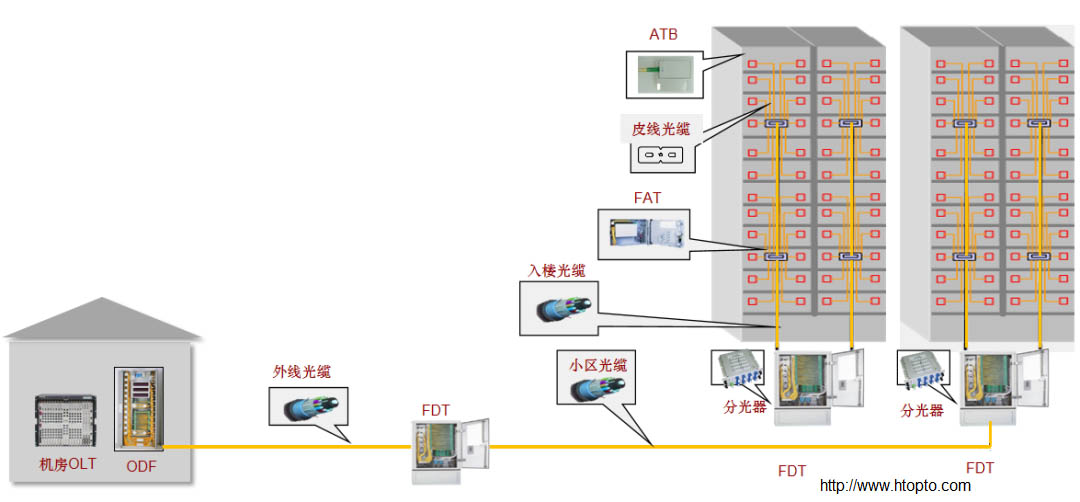
OLT is placed in the campus server room, and in the case of first-class splitting, the splitter is placed in the optical handover box or splitting fiber box in the basement of the building or in the building; the indoor optical cable with vertical wiring is used in the weak well, and the hollowing process can be used, and the splitter adopts 1*32 or 1:64 splitting, and the size of the splitter is determined by the number of users covered.
So what products are involved in ODN, the following chart can be seen.

Third, the key point: the placement of all-optical network splitter
Friends who have done all-optical networks know that the key to the construction of all-optical networks lies in the placement of splitters, which is particularly important in the project, because the entire transmission process is fiber, splitting is inevitable, and currently, according to the project, there are three types of splitting.
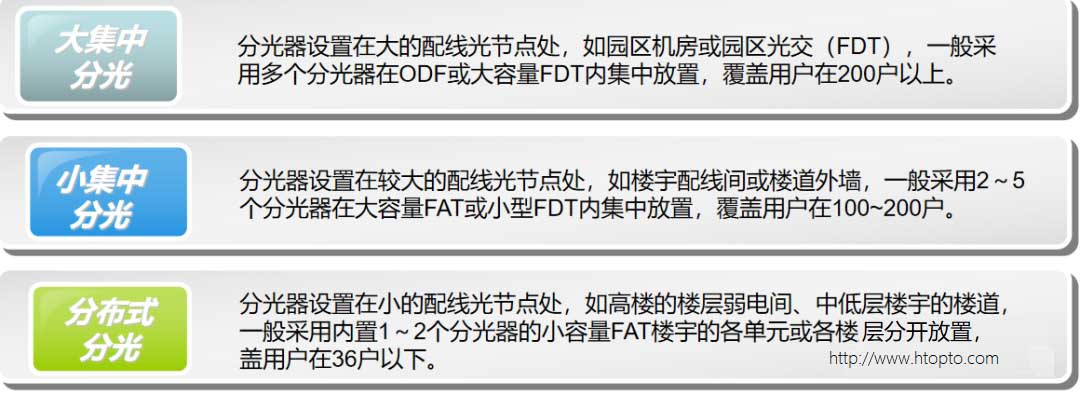
3.1��、Large centralized splitter.
Splitters are set at large wiring optical nodes, such as campus server rooms or campus optical interchange (FDT), which generally use multiple splitters placed centrally within the ODF or high-capacity FDT, covering more than 200 users.

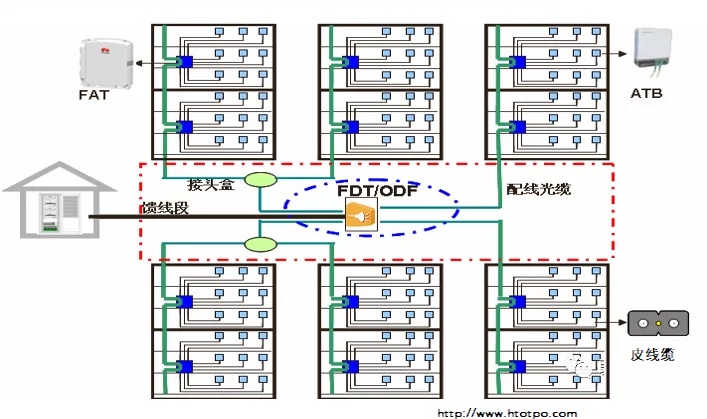
Large centralized splitting characteristics.
(1), suitable for low-rise residential FTTH, office building multi-tenant scenarios, requiring more pipeline resources.
(2), using a level of splitting, 1:32 or 1:64 splitter.
(3), splitters are installed on the shelves of high-capacity ODF/FDT, and the number of splitters is configured according to the number of users.
(4), FAT set up in the building, covering 1 or more floors; FAT can choose direct fusion or mating module.
(5), the highest construction cost, but the most convenient operation and maintenance.
3.2�����、Small centralized splitter: The splitter is set at a larger wiring optical node.
Splitter set at larger wiring optical nodes, such as building wiring room or building outside wall, generally using 2 to 5 splitters in large-capacity FAT or small FDT within the centralized placement, covering users in 100 ~ 200 households.


Small centralized splitting characteristics.
(1), suitable for residential FTTH, office tenants, shopping malls and other scenarios with general requirements for pipeline resources.
(2), using a level of splitting, 1:32 or 1:64 splitter, covering one or more layers.
(3) Splitters are placed centrally within high-capacity FATs or small FDTs, with the number configured according to the number of users, generally with a maximum configuration of no more than four.
(4), construction costs are medium, and operation and maintenance are more convenient.
3.3�、Distributed beam splitter.
The splitter is set at small wiring optical nodes, such as the floor of a high building weak room, the hallways of low- and medium-rise buildings, generally using a built-in 1 to 2 splitters of small-capacity FAT building units or floors are placed separately, covering users below 36 households.

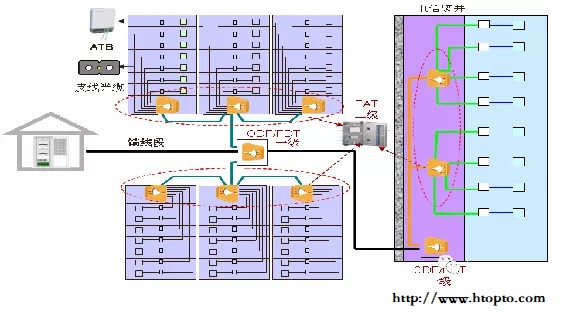
Distributed splitting features.
(1), suitable for super high-rise, office building multi-tenant and other user-dense scenarios, with minimum requirements for pipeline resources.
(2), splitter using 1:8+1:8 or 1:16+1:4, the combination ratio does not exceed 1:64; the first stage splitter is installed on the shelf in the ODF or FDT, the second stage splitter is installed with wall-mounted FAT, the number generally does not exceed 4.
(3), FAT is installed in the building, covering 1 or more floors; FAT can choose direct fusion or mating module.
(4), the lowest construction cost, but the operation and maintenance is more inconvenient.
3.4��、Comparison of three types of spectroscopy.
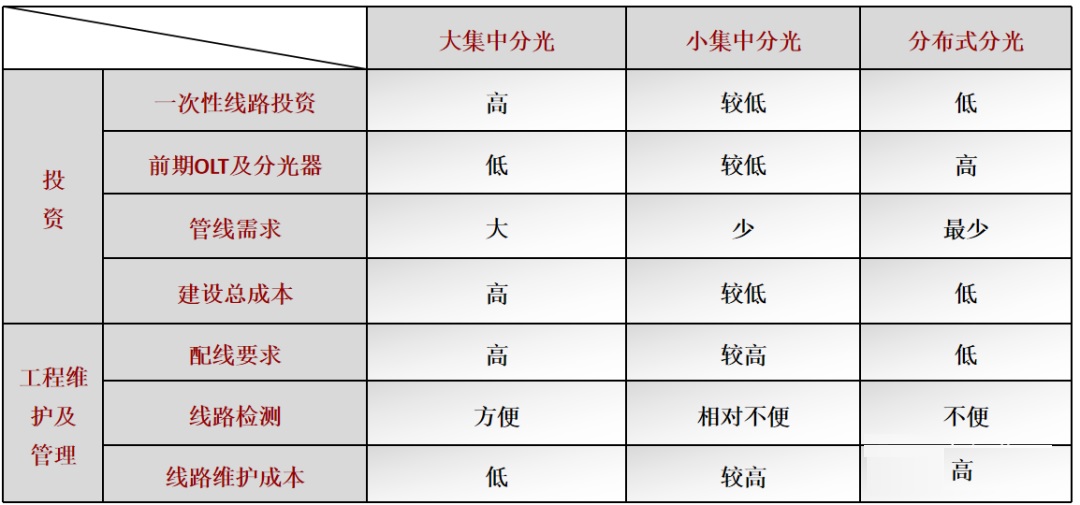
Each of the three splitting modes has its own characteristics, and the choice is mainly based on the user scale and density.
In addition to campus projects, all-optical networks are also heavily used in commercial complexes
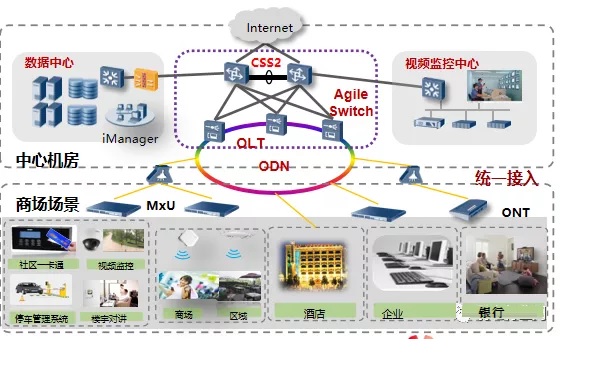
Weak electrical system unified bearing, simplify management and operation and maintenance.
Fourth, all-optical network and traditional network comparison
4.1, Network structure
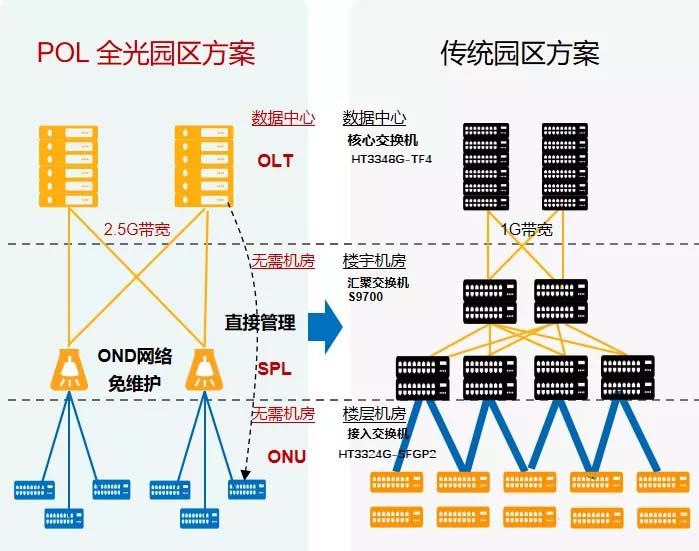
4.1.1, POL all-optical network.
Bandwidth guarantee: single PON port 2.5G bandwidth; peak hours, exit bandwidth effective utilization rate > 92%
Clear hierarchy: coverage area & number of users does not affect the secondary structure
Simple maintenance: OND network maintenance-free; OLT directly manages ONU
Smooth upgrade: bandwidth expansion on demand; 1G → 10G, no need to change the all-optical network
4.1.2����、Traditional network stacking.
Bandwidth waste: single-port 1G bandwidth; peak hours, the effective utilization of export bandwidth <60%.
Hierarchical confusion: hierarchy increases with the expansion of scale, ponderous and confusing, complex maintenance, upper-level equipment can not manage lower-level equipment, manual management difficulties.
Upgrade difficulties: new personnel, decreasing bandwidth; upgrade bandwidth network needs to be re-deployed.
4.2, wiring advantages
4.2.1、Fiber optic wiring.
(1), fiber optic life of 30 years, glass core / plastic core, corrosion-resistant.
(2), ultra-long transmission distance, can solve many wiring difficulties.
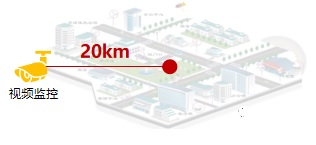
4.2.2��、Copper wiring
(1), copper wiring takes up a lot of pipeline resources
(2), generally easy to age in about 10 years and need to be redeployed.
(3), the transmission distance is limited to 100 meters.
In the end, H&T provides one-stop POL solutions and products, welcome to call us: 0755-86197637, 15712000724
For more information about xPON products, please visit below link:
http://6467898.cn/en/acpzs.asp?dlb_id=4



















